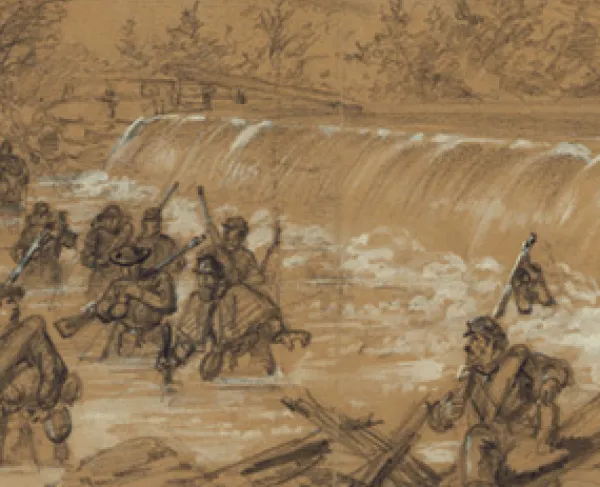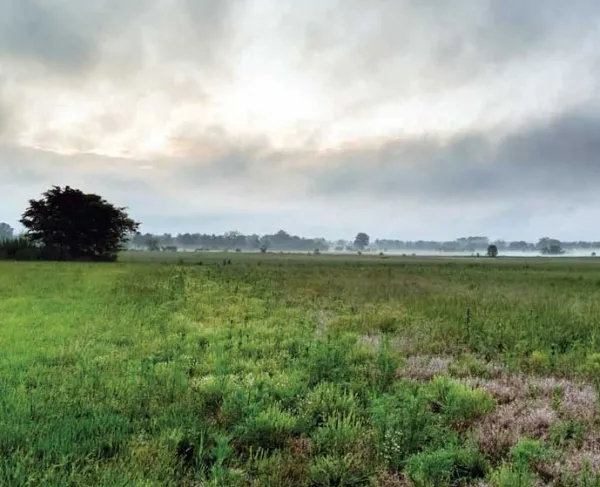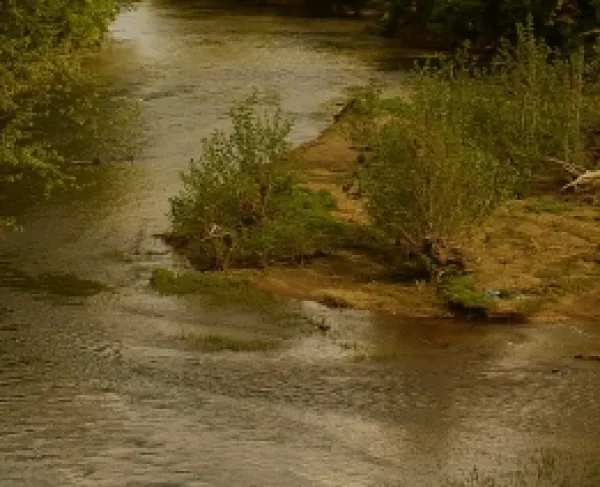10 Facts: Kelly's Ford
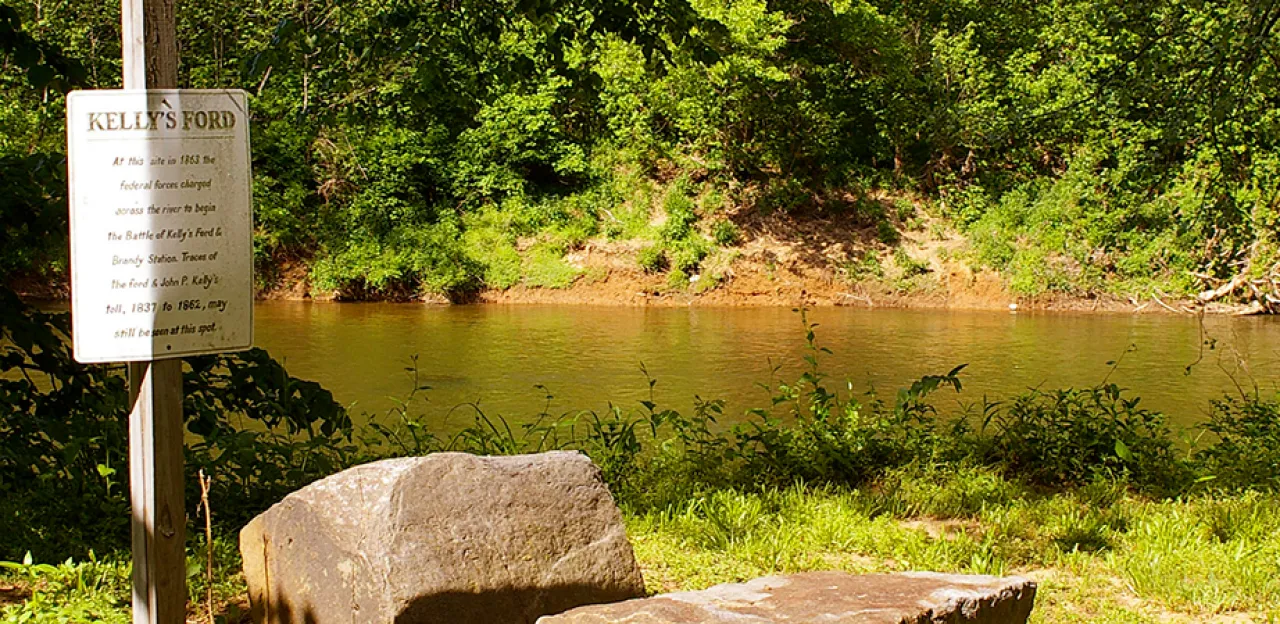
The Civil War Trust has successfully saved hundreds of acres at the site of this crucial 1863 battle. To expand your appreciation for this battle, please consider these ten facts about the Battle of Kelly's Ford.
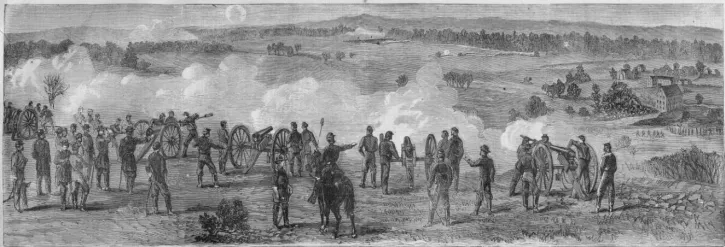
Fact #1: Despite failing to meet their main objective, the Battle of Kelly's Ford greatly improved the morale of the Federal cavalry.
Before the Battle of Kelly’s Ford it was conventional wisdom in both armies that Union cavalrymen were no match for their Confederate counterparts. Marching northern foot soldiers were fond of the taunt, “There’s going to be a fight! The cavalry’s coming back,” whenever they saw horsemen on the road. At the Battle of Hartwood Church in February 1863, the Confederate cavalry had embarrassed the Army of the Potomac's cavalry forces, furthering the pervasive sense of Federal inferiority. The problem was not that the Union men were unskilled or cowardly, but rather that they were poorly equipped and feebly organized. When Joe Hooker took control of the Army of the Potomac in 1863 he implemented a number of reforms in his mounted wing, chiefly the introduction of rapid-firing carbines and a central command structure. At Kelly’s Ford the Union cavalry was finally ready to fight a large, sustained battle. The Union force on the field, numbering over 2,000, was the largest mounted force to be organized under a single battlefield commander up to that point in the war. Despite failing to disperse the Confederate cavalry to their front, the hard fighting at Kelly's Ford encouraged the Federal cavalry. The reaction of one member of the 4th New York Cavalry to the fighting at Kelly's Ford was not atypical - "It was a square, stand-up fight of over four hours duration, and the result proves that our cavalry, when well handled, is equal if not superior to the enemy."
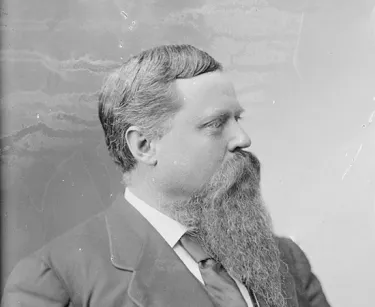
Fact #2: The opposing commanders, Fitzhugh Lee and William Averell, were close friends at West Point.
William Averell, a New Yorker, maintained a close friendship with Virginian Fitzhugh Lee throughout their cadetship at West Point in the 1850s. Averell graduated a year before Lee and went out west to serve with the U.S. Mounted Rifles. Lee graduated in 1856 and spent three years fighting Comanches in Texas before being appointed to a teaching position at the Academy. They next encountered each other on opposite sides of the Rappahannock in 1863. After leading a raid into Union territory in February, Lee left a note for Averell that read: “I wish you would put up your sword, leave my state, and go home. You ride a good horse, I ride a better. If you won't go home, return my visit, and bring me a sack of coffee.” Averell’s anger upon hearing of the taunt compelled him to request permission to cross the river and meet his old friend in open battle.
Fact #3: Kelly’s Ford was a prelude to the Battle of Chancellorsville.
Joe Hooker ordered Averell to attack Fitzhugh Lee in order to achieve a number of objectives. He knew that his overall goal of crushing Robert E. Lee would first require a flanking maneuver around the impregnable fortifications at Fredericksburg. To pull it off, he would need to know the strength and attitude of the defenders guarding the western fords of the Rappahannock. Averell’s raid would obtain valuable intelligence about troop dispositions and provide a live-fire test of the Confederate reaction patterns. Averell might even destroy Fitzhugh Lee’s force, eliminating the first line of defense on the western stretch of the river. The result at Kelly’s Ford would shape the fates of the hundreds of thousands of men who were swept up in the Chancellorsville Campaign.
Fact #4: During the night of March 16th Union troopers stripped pews out of a church to use as firewood.
To reach the ford, Averell first led his column on a 32-mile ride to Morrisville, Virginia. The 6th Ohio regiment reached the town shortly before midnight on the 16th and halted to rest. Finding themselves without an adequate source elsewhere, the troopers used the pews of one of the town’s abandoned churches as kindling under their coffeepots. Captain Delos Northway confided to his diary that “It seems hard to so desecrate the houses of worship, and yet probably from the pulpit has been preached the Doctrines of Secession and the divine right of one man to own another. Well let it go, it has had its day.”
Fact #5: The Confederates defending Kelly’s Ford repulsed five charges before the Union troopers crossed the river.
The Union attack began at daybreak on the 17th. From their side of the river Averell’s men caught glimpses of grey-clad sharpshooters hunkered in rifle pits, a trench-like millrace, and two stout houses on the southern bank. The desperate firing of these 130 defenders, under the command of Captain James Breckinridge, filled the ford with dead men and horses and held up the Federals for almost three hours. Although the Confederates were outnumbered approximately fifteen to one, they were greatly benefited by their previous construction of an abatis of sharp, tangled branches and logs on the northern bank that prevented the Union men from bringing their weight of numbers to bear. Lieutenant Simeon Brown heroically led the sixth charge and finally dislodged the southerners despite losing 79% of his attacking party while crossing the river.
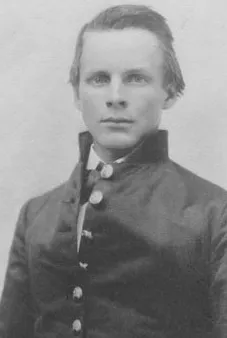
Fact #6: "Gallant" John Pelham was killed during the battle.
John Pelham, a young artilleryman with a sparkling record, was calling on a young lady nearby when the sound of gunfire drew him towards the battle. Although he was not in command of any troops on the field, he led the first charge on the Union line and was killed by a shell fragment in the attempt. Stuart wept upon hearing of the young man’s death, exclaiming that “our loss is irreparable,” and later wrote to his wife recommending that they name their next child for the fallen warrior.
Fact #7: Newly issued Sharps carbines were instrumental in repelling the Confederate charges.
Hooker’s plan to enhance the firepower of his cavalrymen paid off on the battlefield. The new Sharps carbines were capable of firing up to 16 rounds per minute, an exponential increase over the typical armament of Civil War fighter. The vastly improved rate of fire was particularly important to mounted operations, as the success of a cavalry charge relied on overwhelming the opposing line before counter-volleys could rob the attackers of their momentum. Horsemen could typically cover several hundred yards before musket-armed defenders could load and fire more than one shot apiece, but this changed with the introduction of the carbines. Almost none of the Confederate charges at Kelly’s Ford reached hand-to-hand range before being broken up by Union firepower.

Fact #8: Many troopers experienced their first saber combat at Kelly’s Ford.
The saber, a curved sword used for slashing and thrusting, was a traditional cavalry weapon dating back to the 17th century. However, revolvers and other light firearms had become more popular among horse soldiers by the 1860s. At Kelly’s Ford, Averell made the deliberate choice to reintroduce the saber in the day’s conflict. Facing the weapon at close range, the Confederates had no choice but to follow suit. The wounds caused by the blades horrified men on both sides. Given the nature of cavalry shock action, in which hand-to-hand engagements led to one side quickly seizing the upper hand and forcing their opponents to flee in terror within minutes, the demoralizing effects of the saber played a significant role in the outcome of the battle.
Fact #9: Averell was later criticized for missing a golden opportunity to destroy Fitzhugh Lee’s brigade.
By day’s end the Confederate forces were in disarray. Repeated failed charges had left Lee’s men exhausted and disheartened, and Averell held a decisive advantage in manpower and momentum. However, Averell did not order the final charge that might have finally overwhelmed Lee. Thinking he heard the sounds of southern reinforcements being rushed to the battlefield, he opted to withdraw back across the Rappahannock. Thomas Rosser, speaking after the war, explained that Averell “mistook the wild beating of his timid heart for drums.” While he had failed to achieve total victory, Averell’s conduct that day did much to improve Union morale and provoke concern in the southern ranks. He also left a sack of coffee and a note for his old friend south of the river: “Here’s your coffee. Here’s your visit. How did you like it? How’s that horse?”
Fact #10: The Civil War Trust has preserved hundreds of important acres of battlefield land at Kelly’s Ford.
In 2013, the Civil War Trust effected a 964 acre acquisition that will protect most of the key battlefield land at Kelly's Ford. Obtaining this land was part of a joint effort by the state of Virginia, the Civil War Trust, the Central Virginia Battlefields Trust, and the Shenandoah Valley Battlefields Foundation to protect a total of 2,792 acres across eight battlefields in the state. In the coming years the Trust hopes to preserve even more land along the banks of the Rappahannock, particularly at Brandy Station.
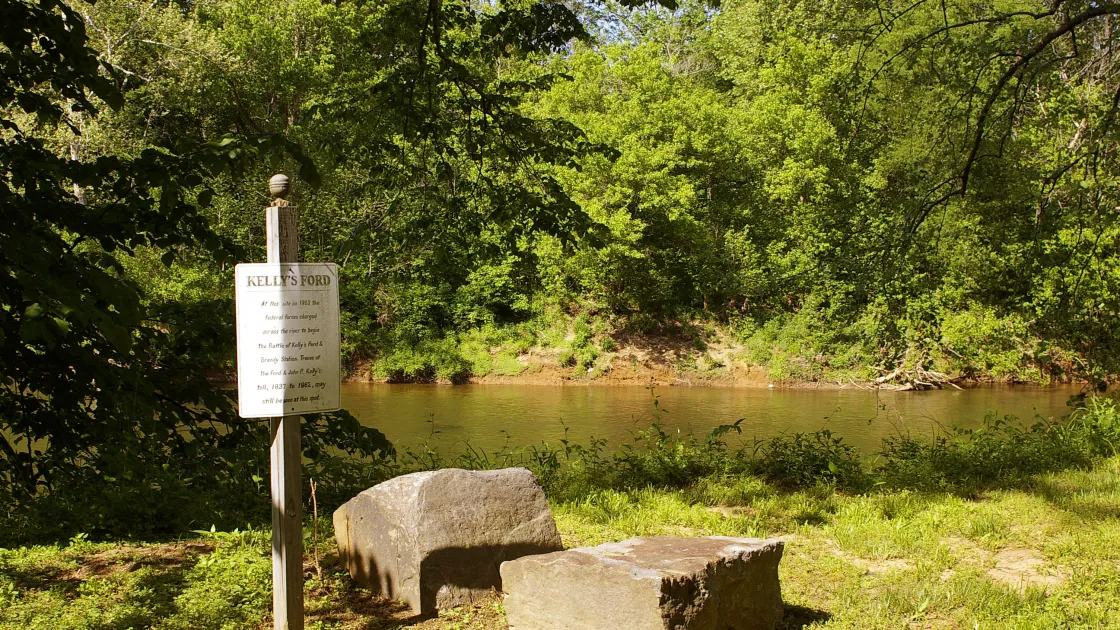
Learn More: Kelly's Ford
Related Battles
78
133
